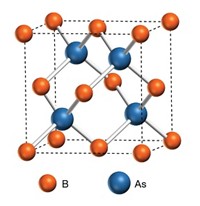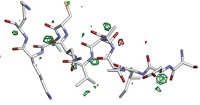Advertisement
Grab your lab coat. Let's get started
Welcome!
Welcome!
Create an account below to get 6 C&EN articles per month, receive newsletters and more - all free.
It seems this is your first time logging in online. Please enter the following information to continue.
As an ACS member you automatically get access to this site. All we need is few more details to create your reading experience.
Not you? Sign in with a different account.
Not you? Sign in with a different account.
ERROR 1
ERROR 1
ERROR 2
ERROR 2
ERROR 2
ERROR 2
ERROR 2
Password and Confirm password must match.
If you have an ACS member number, please enter it here so we can link this account to your membership. (optional)
ERROR 2
ACS values your privacy. By submitting your information, you are gaining access to C&EN and subscribing to our weekly newsletter. We use the information you provide to make your reading experience better, and we will never sell your data to third party members.
Spectroscopy
First high-resolution IR spectra of buckyballs
Advanced cooling and optical techniques made it possible
by Sam Lemonick
January 9, 2019
| A version of this story appeared in
Volume 97, Issue 2
Buckyballs’ large size and intricate structure have long captured scientists’ interest, even if practical applications for the 60-carbon molecules remain elusive. Now, more than 30 years after their discovery, scientists using cutting-edge techniques have captured high-resolution infrared spectra of buckyballs for the first time (Science 2019, DOI: 10.1126/science.aav2616).
The size and structure that make buckyballs so fascinating also frustrate spectroscopists. One atom’s rotation or vibration propagates across the molecule, producing a spectrum that looks more like a low hill than a series of sharp peaks. To get clear spectra, Jun Ye of the University of Colorado and colleagues first had to cool buckyballs down to near 100 K. Ye likens it to a crowd holding hands and dancing. Each person’s movement will cause their neighbors and their neighbors’ neighbors to move a little in response. At lower temperatures he says it’s like most of the dancers are lying down, allowing a small number of dancers’ movements to stand out. At room temperature, a buckyball has thousands of rotational and vibrational modes. That number approaches one at 100 K.
The researchers injected gas-phase buckyballs into a chamber of cold argon atoms, which cooled the buckyballs down as they collided with them. Then they used comb spectroscopy to see the movements happening in buckyballs, in which an optical comb produces a wide spectrum of light divided into discrete lines at different frequencies, like the teeth of a comb. The researchers could see which frequencies correspond to buckyball motion by looking at which teeth were knocked out or absorbed after interacting with the molecule. Ye’s group used mirrors in their cold cell to bounce the light back and forth tens of thousands of times, increasing the sensitivity of their measurements.
“It is a spectroscopic tour-de-force,” says Daniel Neumark, a spectroscopist at the University of California, Berkeley. He says spectroscopists usually throw their hands up at molecules this large, but that state-of-the-art technology made this work possible.
Ye says their spectra largely confirm the past 20 years of theoretical work on C60 fullerene, but notes there is one discrepancy between simulated spectra and what the group observed. The researchers say simulated spectra fail to predict transitions that are likely due to centrifugal distortion caused by the buckyballs’ motions. They’re still trying to understand those higher-order effects to reach a more complete understanding of the buckyball.




Join the conversation
Contact the reporter
Submit a Letter to the Editor for publication
Engage with us on Twitter